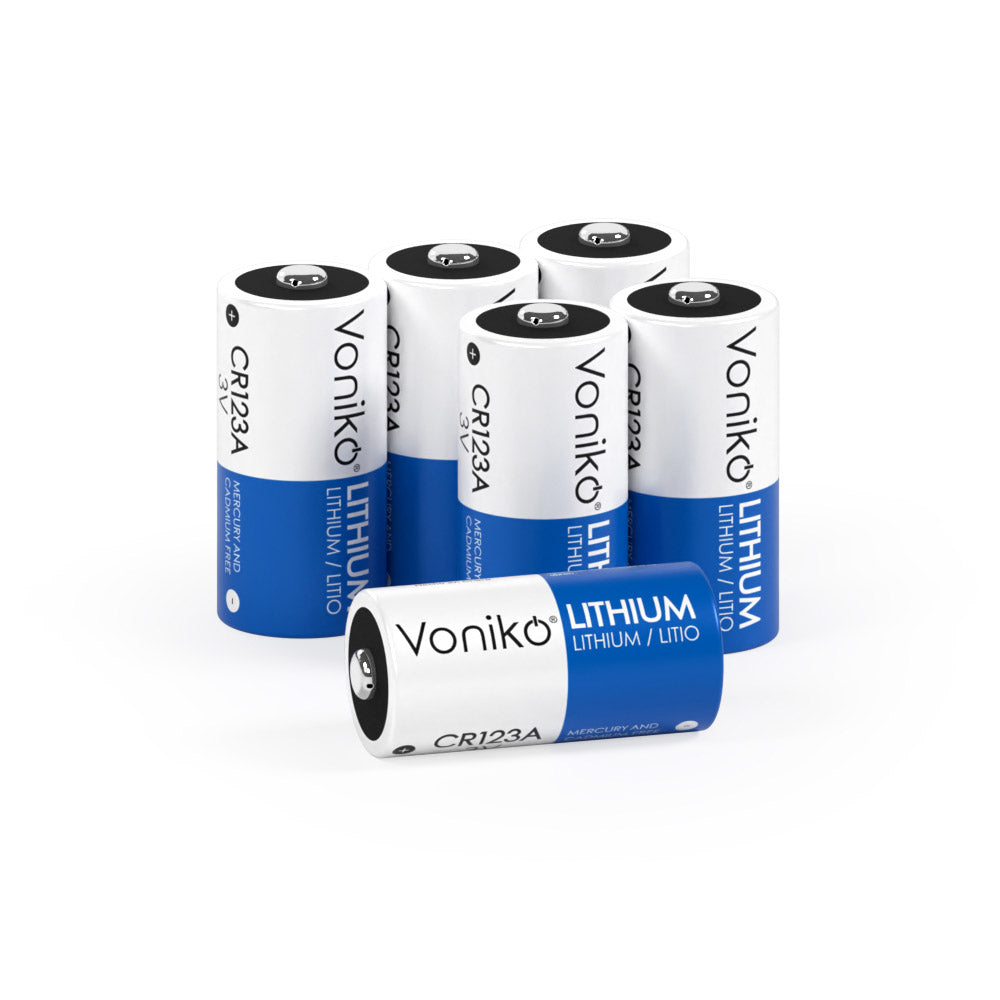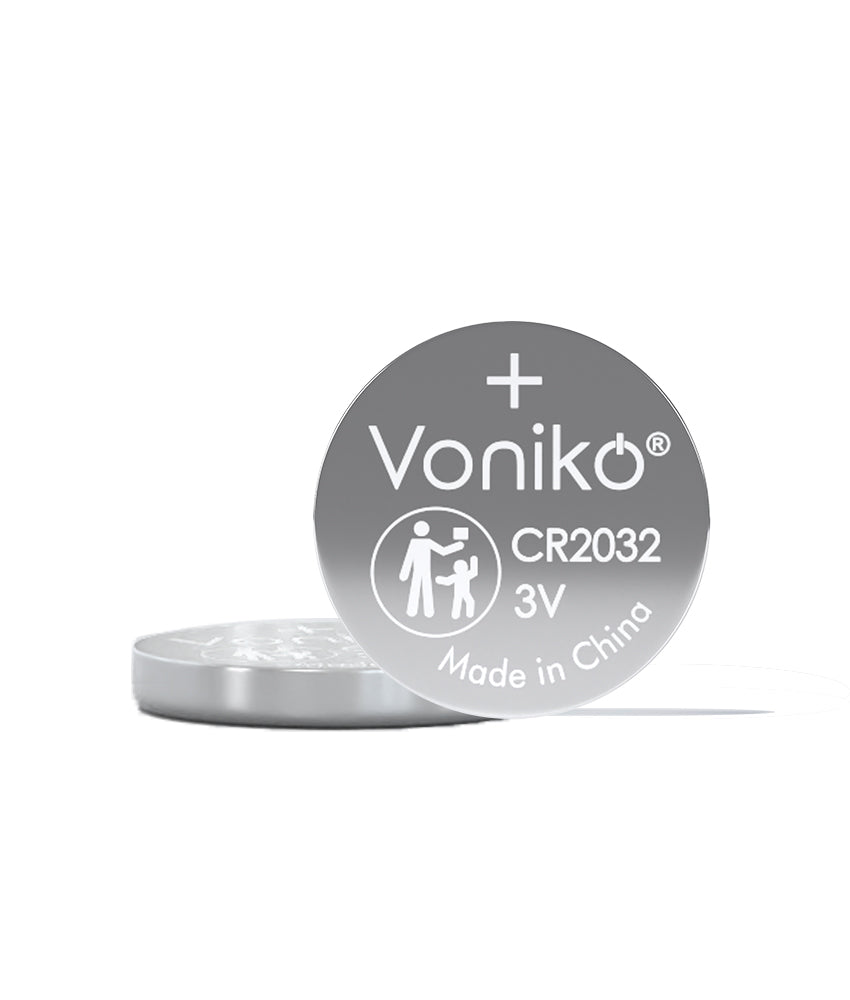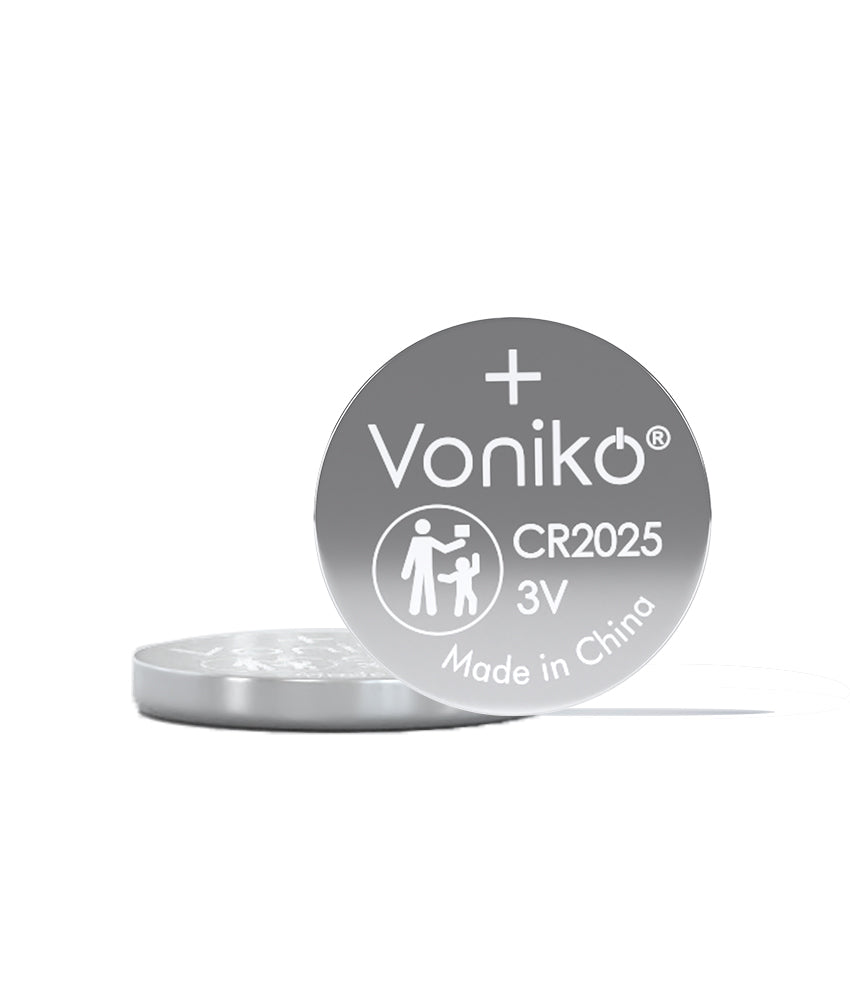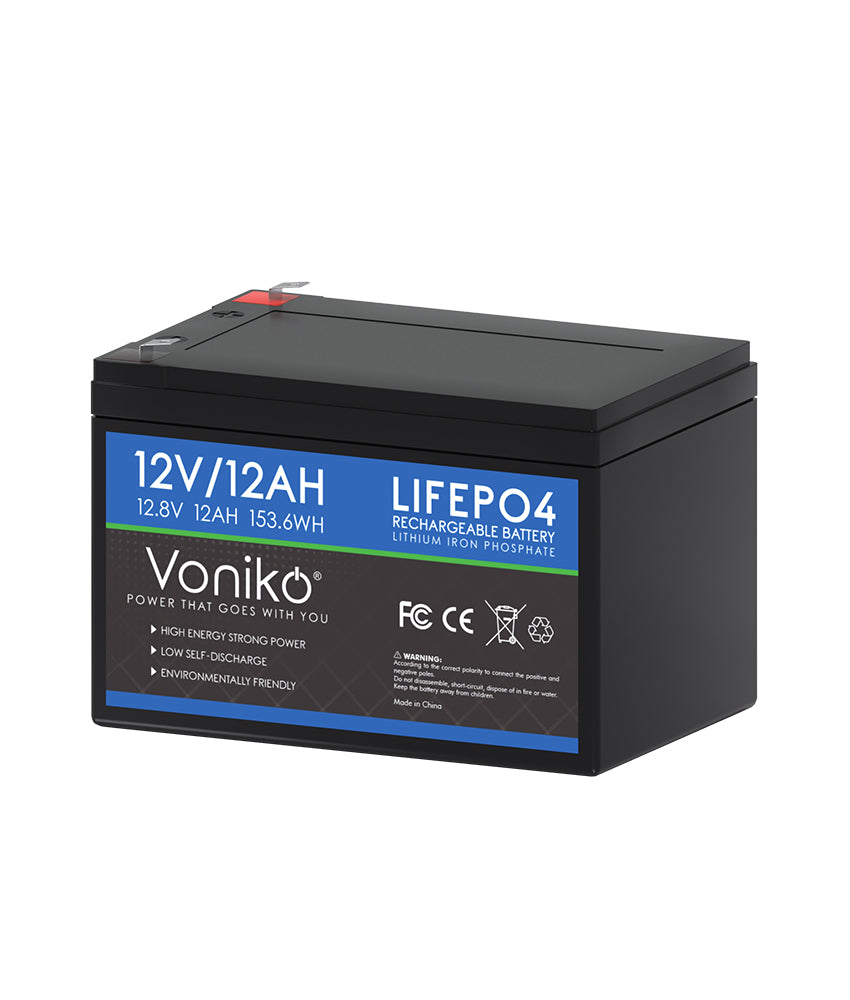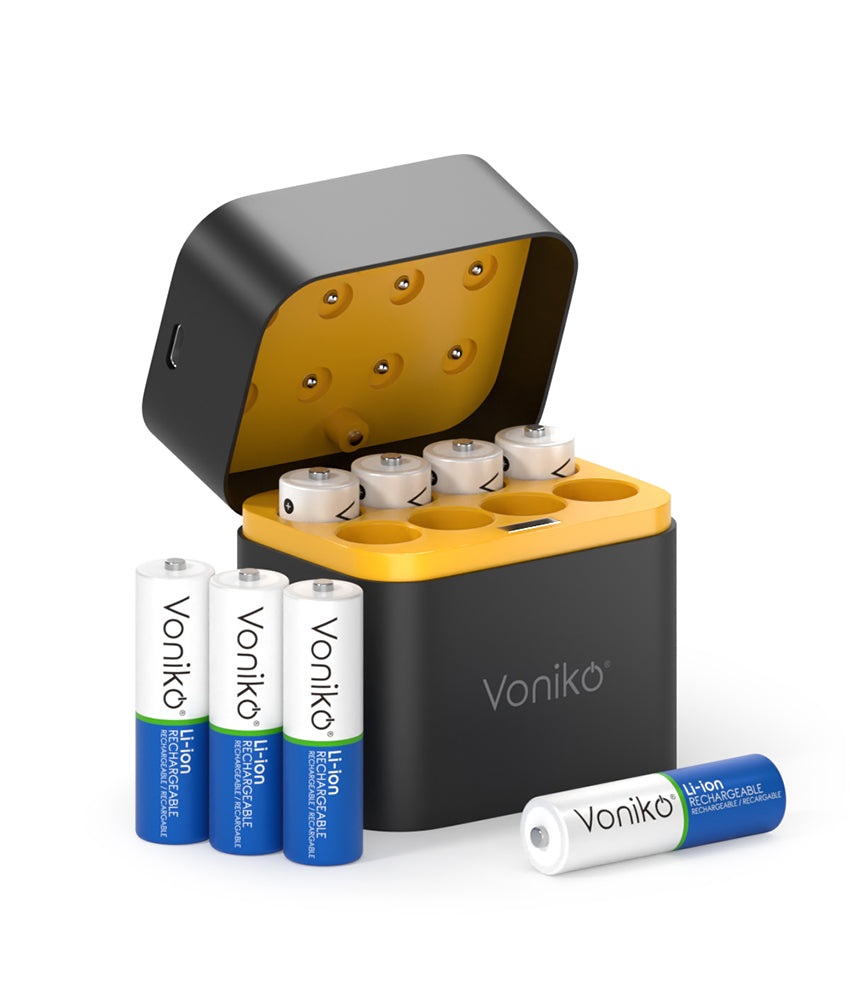Standing in the battery aisle at the store, you're faced with a wall of options that seems designed to confuse rather than help. On one side, traditional alkaline batteries promise instant power at a low upfront cost. On the other, rechargeable batteries boast environmental benefits and long-term savings. Meanwhile, lithium options claim superior performance but come with premium price tags. Which choice actually makes sense for your specific needs?
The decision between rechargeable and non-rechargeable batteries isn't just about cost – it's about understanding how you use devices, where performance matters most, and what trade-offs you're willing to make. A gaming controller that drains batteries weekly has very different requirements than a smoke detector that needs reliable power for years. Making the wrong choice can mean wasted money, poor device performance, or the frustration of constantly dead batteries when you need them most.
At Voniko®, we're a U.S.-based battery brand known for great value household batteries, and we've helped thousands of customers navigate this decision. Whether you're considering our rechargeable AA options for high-drain devices or our premium alkaline batteries for reliable everyday power, understanding the real-world differences helps you make choices that save money and deliver better performance. The right battery type can transform how you think about powering your devices.
Rechargeable vs. Non-Rechargeable Batteries: Inside
Non-rechargeable batteries, also called primary batteries, generate electricity through irreversible chemical reactions. Once the active materials are consumed, the battery is depleted and must be discarded.
Rechargeable batteries, or secondary batteries, use reversible chemical reactions that can be reset by applying external electrical energy. This recharging process restores the active materials to their original state, allowing the battery to provide power repeatedly through hundreds or thousands of cycles.
The most common non-rechargeable types include alkaline (zinc-manganese dioxide), lithium (lithium-metal), and zinc-carbon batteries. Each chemistry offers different performance characteristics, with alkaline providing good general-purpose performance, lithium excelling in extreme conditions, and zinc-carbon offering budget options for low-drain applications.
Primary battery chemistries:
- Alkaline: Excellent general-purpose performance, wide temperature range
- Lithium: Superior cold weather performance, 10x longer lasting than alkaline in high-drain devices
- Zinc-carbon: Budget option for very low-drain applications
Secondary battery chemistries:
- Nickel-Metal Hydride (NiMH): Most common rechargeable AA/AAA type
- Lithium-ion: High energy density, excellent for portable electronics
- Lithium Iron Phosphate (LiFePO4): Long cycle life, stable chemistry
So now you know why certain battery types excel in specific applications and why one-size-fits-all recommendations rarely work for real-world battery needs.
Cost Analysis: Initial Investment vs. Long-Term Savings
The financial comparison between rechargeable and non-rechargeable batteries depends heavily on usage patterns, device power consumption, and replacement frequency. While rechargeable batteries cost significantly more upfront, they can provide substantial savings in high-use applications.
Consider a typical household scenario with wireless gaming controllers that drain batteries monthly. A set of alkaline AA batteries might cost 25 but can be recharged 1000 times. Over two years, you'd spend 25 investment in rechargeables plus minimal electricity costs.
However, for low-drain devices like smoke detectors or emergency flashlights that might use the same batteries for years, non-rechargeable options often make more economic sense. The self-discharge characteristics of rechargeable batteries can result in dead batteries when you need them most, while alkaline or lithium primaries maintain charge during long storage periods.
Cost comparison scenarios:
- High-drain monthly replacement: Rechargeable pays for itself in 3-4 cycles
- Moderate-drain quarterly replacement: Rechargeable breaks even in 1 year
- Low-drain annual replacement: Non-rechargeable often more economical
- Emergency/standby devices: Non-rechargeable generally preferred for reliability
The break-even point varies by specific battery prices and usage patterns, but devices that require battery replacement more than 3-4 times per year typically benefit from rechargeable options both financially and environmentally.
Performance and Device Compatibility
Performance differences between rechargeable and non-rechargeable batteries significantly impact device operation and user experience. These differences go beyond simple runtime to include voltage stability, current delivery, and temperature tolerance that directly affect how devices function.
Most rechargeable NiMH batteries provide 1.2 volts compared to 1.5 volts from alkaline batteries. While this 0.3-volt difference seems small, some devices are sensitive to voltage variations and may not operate properly with rechargeable batteries. Digital cameras, high-power flashlights, and some electronic toys may exhibit reduced performance or refuse to operate with 1.2-volt rechargeable cells.
However, rechargeable batteries excel in current delivery and voltage stability under load. NiMH batteries can deliver high current without the voltage drops that plague alkaline batteries in demanding applications. This makes rechargeables ideal for devices like digital cameras, remote-controlled toys, and power tools that need consistent power delivery.
Performance comparison factors:
- Nominal voltage: 1.5V alkaline vs. 1.2V NiMH affects device compatibility
- Current delivery: Rechargeable batteries excel in high-drain applications
- Voltage stability: NiMH maintains stable voltage under load
- Temperature tolerance: Varies by chemistry, lithium performs best in extremes
- Self-discharge: Rechargeable batteries lose charge over time when unused
Modern low self-discharge (LSD) rechargeable batteries address the traditional weakness of standard rechargeables by maintaining 85% of their charge after one year of storage. This improvement makes rechargeable batteries viable for more applications while retaining their high-drain performance advantages.
Environmental Impact
Environmental considerations increasingly influence battery choice decisions as consumers become more aware of waste reduction and resource conservation. The environmental impact comparison between rechargeable and non-rechargeable batteries involves manufacturing resources, disposal considerations, and lifecycle emissions.
A single rechargeable battery that cycles 1000 times replaces 1000 single-use batteries over its lifetime, dramatically reducing material consumption and waste generation. Manufacturing one rechargeable battery requires more resources initially, but the environmental cost per use cycle becomes minimal compared to constantly producing and disposing of primary batteries.
However, the environmental equation changes for low-use applications. A smoke detector battery that lasts 5+ years represents minimal environmental impact whether rechargeable or primary. In such cases, the manufacturing impact of a rechargeable battery plus charger might exceed the environmental cost of occasional primary battery replacement.
Environmental considerations:
- Resource consumption: Rechargeable batteries use resources more efficiently in high-use applications
- Waste reduction: One rechargeable replaces hundreds of primary batteries over its lifetime
- Manufacturing impact: Higher initial environmental cost for rechargeable systems
- End-of-life disposal: Both types require proper recycling, rechargeable batteries contain more hazardous materials
- Transportation emissions: Fewer battery purchases reduce transportation-related environmental impact
Proper recycling becomes crucial for both battery types, but especially for rechargeable batteries that contain materials like cobalt, nickel, and lithium that must be recovered rather than disposed of in regular waste streams.
Our Recommendations and Applications
Different devices have distinct power requirements that make them better suited for either rechargeable or non-rechargeable batteries. Understanding these application-specific needs helps you choose the right battery type for optimal performance and value.
High-drain devices that consume batteries quickly represent the sweet spot for rechargeable batteries. Digital cameras, wireless gaming controllers, RC toys, and portable audio equipment benefit from both the cost savings and consistent performance that rechargeable batteries provide. These devices often use batteries so quickly that self-discharge isn't a concern.
Low-drain devices like wall clocks, TV remotes, and smoke detectors typically work better with non-rechargeable batteries. These applications need batteries that maintain charge during long periods of light use, making the excellent shelf life of alkaline or lithium primary batteries more valuable than rechargeability.
High-drain applications (favor rechargeable):
- Digital cameras: Benefit from stable voltage and high current delivery
- Gaming controllers: Cost savings significant due to frequent battery replacement
- RC vehicles and drones: High current demands suit rechargeable characteristics
- Portable audio equipment: Consistent power improves audio quality
- Power tools: High-capacity rechargeable batteries essential for adequate runtime
Low-drain applications (favor non-rechargeable):
- Smoke and carbon monoxide detectors: Reliability during emergencies crucial
- Wall clocks and thermometers: Long shelf life prevents unexpected failures
- Emergency flashlights: Must work reliably after months of storage
- TV remotes: Low power consumption makes recharging inconvenient
- Backup devices: Shelf life more important than rechargeability
Mixed applications (case-by-case analysis):
- Wireless keyboards and mice: Depends on usage frequency and convenience preferences
- Flashlights: Regular use favors rechargeable, emergency use favors primary
- Portable radios: Usage patterns determine optimal battery type
Charging Infrastructure and Maintenance Requirements
Rechargeable batteries require charging infrastructure and maintenance that add complexity and cost beyond the initial battery investment. Understanding these requirements helps determine whether rechargeable batteries fit your lifestyle and usage patterns.
A quality battery charger represents a significant additional investment, typically costing $20-50 for units that properly charge NiMH batteries without damaging them. Cheap chargers can reduce battery life, cause overheating, or fail to fully charge batteries, negating many advantages of rechargeable systems.
Rechargeable batteries also require more active management than primary batteries. You need to monitor charge levels, maintain charging schedules, and store batteries properly to maximize their lifespan. Some users find this maintenance burden outweighs the benefits, especially for devices used infrequently.
Charging infrastructure considerations:
- Initial charger investment: Quality chargers cost $20-50+ depending on features
- Charging time: 2-12 hours depending on battery capacity and charger specifications
- Multiple battery sets: Often need backup batteries while others are charging
- Storage requirements: Proper storage conditions important for battery longevity
- Maintenance scheduling: Regular charging cycles needed to maintain battery health
Charger features that matter:
- Individual cell monitoring: Prevents overcharging and extends battery life
- Temperature monitoring: Protects batteries during charging process
- Multiple chemistry support: Handles different rechargeable battery types
- Automatic shutoff: Prevents overcharging when batteries reach full capacity
- Conditioning cycles: Maintains battery performance over time
For households with multiple high-drain devices, the charging infrastructure investment makes sense. For occasional users or those who prefer simplicity, the maintenance requirements may outweigh the benefits.
Technology Evolution and Future Considerations
Battery technology continues evolving rapidly, with new chemistries and improvements that affect the rechargeable versus non-rechargeable decision. Understanding these trends helps make choices that remain optimal as technology advances.
Lithium-ion rechargeable batteries are becoming more common in AA and AAA form factors, offering higher energy density and better performance characteristics than traditional NiMH batteries. Our AA lithium-ion rechargeable batteries provide ≈ 1900 energizer ultimate capacity in a rechargeable format, combining the performance advantages of lithium chemistry with rechargeability.
Low self-discharge NiMH batteries have largely eliminated the traditional weakness of rechargeable batteries in low-drain applications. These batteries maintain 85% of their charge after one year, making them viable for applications previously dominated by primary batteries.
Recent technological improvements:
- Low self-discharge NiMH: Maintains charge during storage like primary batteries
- Lithium-ion AA/AAA: Higher capacity and better performance than traditional NiMH
- USB rechargeable batteries: Eliminate need for separate charging equipment
- Smart chargers: Optimize charging profiles for maximum battery life
- Improved safety features: Better protection against overcharging and thermal runaway
Future trends affecting battery choice:
- Increasing device efficiency: Lower power consumption reduces battery replacement frequency
- Wireless charging integration: Reduces rechargeable battery maintenance burden
- Environmental regulations: May increase costs of primary batteries relative to rechargeable
- Energy density improvements: Rechargeable batteries approaching primary battery performance
- Smart battery management: Devices optimizing performance for different battery types
These technological improvements generally favor rechargeable batteries by addressing their traditional weaknesses while maintaining their core advantages in high-drain applications.
Making the Right Choice for Your Specific Needs
The decision between rechargeable and non-rechargeable batteries ultimately depends on your specific usage patterns, device requirements, and personal preferences. Rather than applying universal rules, consider each application individually to optimize performance and value.
Start by analyzing your current battery usage patterns. Track how often you replace batteries in different devices over a 6-12 month period. Devices requiring monthly or more frequent battery replacement almost always benefit from rechargeable options, while devices lasting 6+ months on a single battery set often work better with primary batteries.
Consider the total cost of ownership including initial battery investment, replacement frequency, charging infrastructure, and your time value for battery management. For some users, the convenience of primary batteries justifies their higher per-use cost, while others prefer the long-term economics of rechargeable systems.
Decision framework questions:
- How often do I replace batteries in this device? (Monthly = rechargeable, annually = primary)
- Is reliable operation during emergencies important? (Yes = favor primary batteries)
- Am I willing to manage charging schedules? (No = primary batteries more convenient)
- Does the device need high current delivery? (Yes = rechargeable often performs better)
- Are there voltage compatibility concerns? (Some devices require 1.5V primary batteries)
Recommended approach by device category:
- Gaming and entertainment: Rechargeable for controllers, primary for remotes
- Photography: Rechargeable for digital cameras, primary for flash units
- Safety and emergency: Primary batteries for reliability during emergencies
- Household electronics: Mixed approach based on usage frequency
- Outdoor and portable: Consider environmental conditions and usage patterns
Hybrid Strategies and Practical Solutions
Many households benefit from hybrid approaches that use different battery types for different applications rather than choosing one technology exclusively. This strategy optimizes performance and cost for each specific use case while simplifying battery purchasing and storage.
Consider maintaining rechargeable batteries for high-drain devices like gaming controllers and digital cameras while using primary batteries for low-drain applications like smoke detectors and emergency flashlights. This approach captures the benefits of each technology without forcing compromises.
Stock both battery types in common sizes like AA and AAA to handle different device requirements. Buy rechargeable batteries for predictable high-use applications and keep primary batteries for emergency backup and low-drain devices.
Practical hybrid strategies:
- Primary rechargeable devices: Gaming controllers, cameras, high-use electronics
- Primary non-rechargeable devices: Safety equipment, emergency backup, low-drain electronics
- Backup approach: Primary batteries as backup when rechargeable batteries are charging
- Seasonal considerations: Use rechargeable for active periods, primary for storage periods
- Travel solutions: Primary batteries for travel convenience, rechargeable for home use
Our Power Lock technology in alkaline batteries ensures 40% longer lasting power compared to competitor brands, making primary batteries more competitive even in moderate-drain applications. Combined with our comprehensive rechargeable options, you can optimize battery choice for each specific application.

The choice between rechargeable and non-rechargeable batteries isn't an either-or decision – it's about understanding your specific needs and choosing the right technology for each application. Whether you prioritize long-term savings, environmental responsibility, performance optimization, or simple convenience, the right battery choice enhances your devices' performance while fitting your lifestyle and budget. At Voniko®, we believe power that goes with you means having the right battery for every situation, and that starts with understanding which technology serves your needs best.









